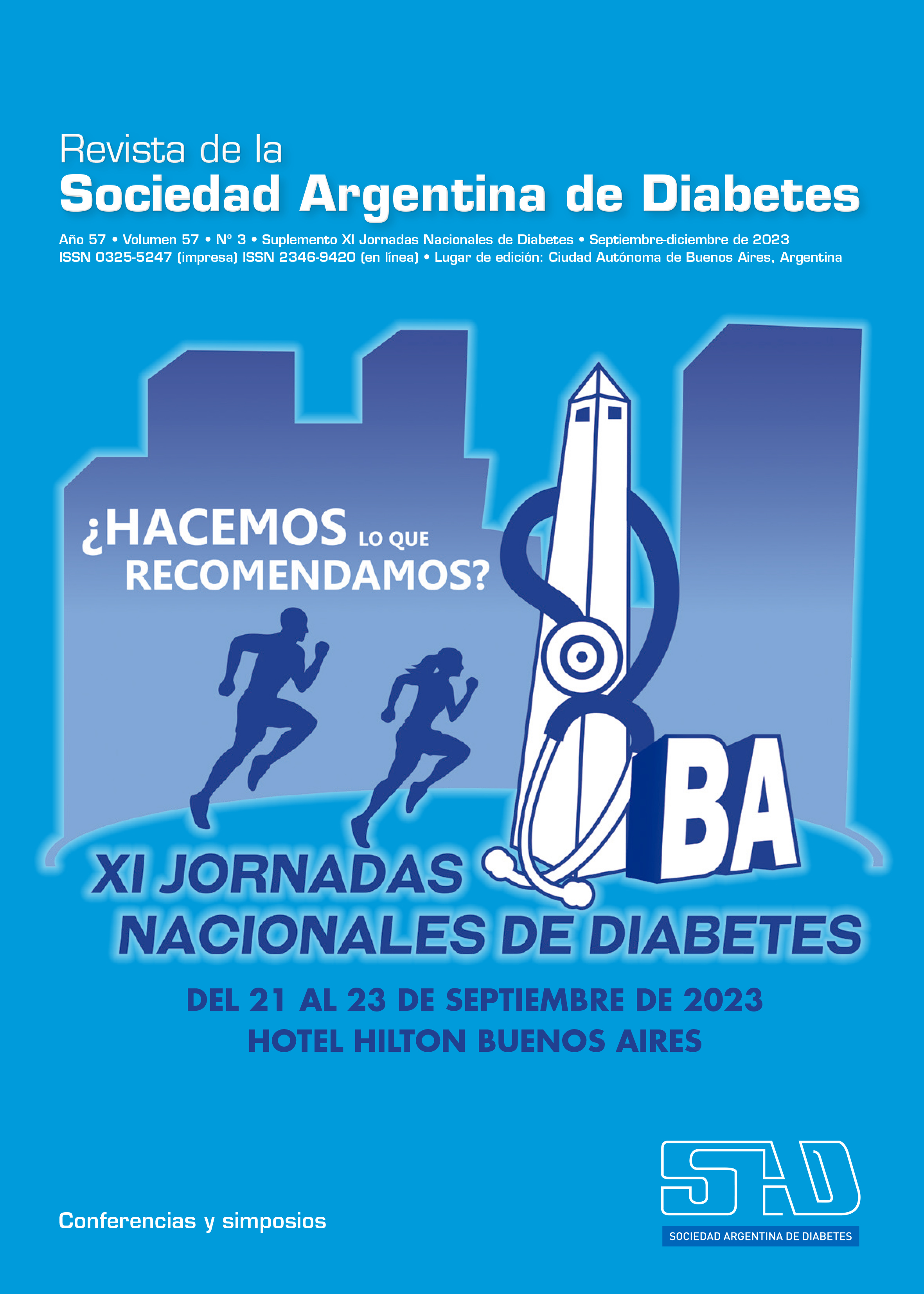Technology for low adherence: yes or no?
DOI:
https://doi.org/10.47196/diab.v57i3Sup.659Keywords:
technology, adherenceAbstract
In recent years, the paradigm shift in the digital era has rotated from Physician-Centered Care and patient compliance using a glucometer and based on the leading role of Glycosylated Hb to Care Centered on the Empowerment of the Person with diabetes with Multiple Interoperable Devices towards achieving good Time-in-Range. Technology as a contribution to the treatment of diabetes has been shown to improve quality of life and impact glycemic control with a decrease in acute complications.
Fred Davis proposed the Technology Acceptance Model (TAM) in 1989, suggesting that there are a number of factors that influence the decision to use a technology. Among these factors, the perceived usefulness and the perceived ease stand out, which generates the attitude of acceptance or discontinuation of it.
Several publications have shown that the challenges in achieving adherence to technology are the management of Body Image (76% of people with diabetes 1 suffer from stigmatization due to the disease), Education in the analysis of Data download, evaluating the overload, infotoxicity, Frustration and Confidence in the result, and the burnout of the data provided, which must be counteracted by access to a Structured Educational program provided by an Interdisciplinary Team. The acquisition of skills and abilities are addressing the complexity of transforming data into information for the achievement of decision making. The adoption of innovative strategies such as the use of ICTs or apps imply cost-effectiveness benefits and optimizes the self-management of the disease, impacts behavior changes, improving biological results and psychosocial aspects, becoming a good ally to promote healthy habits.
Continuous monitoring is a very robust component of therapeutic education and adherence can be assessed with use greater than 70% of the time, number of readings (ideal average greater than 10 per day) and at least one reading every 8 hours in the case of intermittent monitoring.
Well-indicated technology developed in equity can be an opportunity to educate, motivate, have an impact in the future and reduce the burden of disease.
References
I. Barnard-Kelly KD. Psychosocial aspects of diabetes technology. Diabet Med 2020;37: 448-454.
II. Elsayed NA. Diabetes Technology: Standards of Care in Diabetes 2023. Diabetes Care 2023;46(Supp1):S111-S127.
III. Litwak L, et al. Monitoreo continuo de glucosa. Utilidad e indicaciones Medicina 2019;79:44-52.
IV. Borges U, Kubisk T. Continuous glucose monitoring in type 1 diabetes human factors and usage. J Dianetes Sci Technol 2016;10(3):633-639.
Downloads
Published
Issue
Section
License
Copyright (c) 2023 on behalf of the authors. Reproduction rights: Argentine Diabetes Society

This work is licensed under a Creative Commons Attribution-NonCommercial-NoDerivatives 4.0 International License.
Dirección Nacional de Derecho de Autor, Exp. N° 5.333.129. Instituto Nacional de la Propiedad Industrial, Marca «Revista de la Sociedad Argentina de Diabetes - Asociación Civil» N° de concesión 2.605.405 y N° de disposición 1.404/13.
La Revista de la SAD está licenciada bajo Licencia Creative Commons Atribución – No Comercial – Sin Obra Derivada 4.0 Internacional.
Por otra parte, la Revista SAD permite que los autores mantengan los derechos de autor sin restricciones.




























